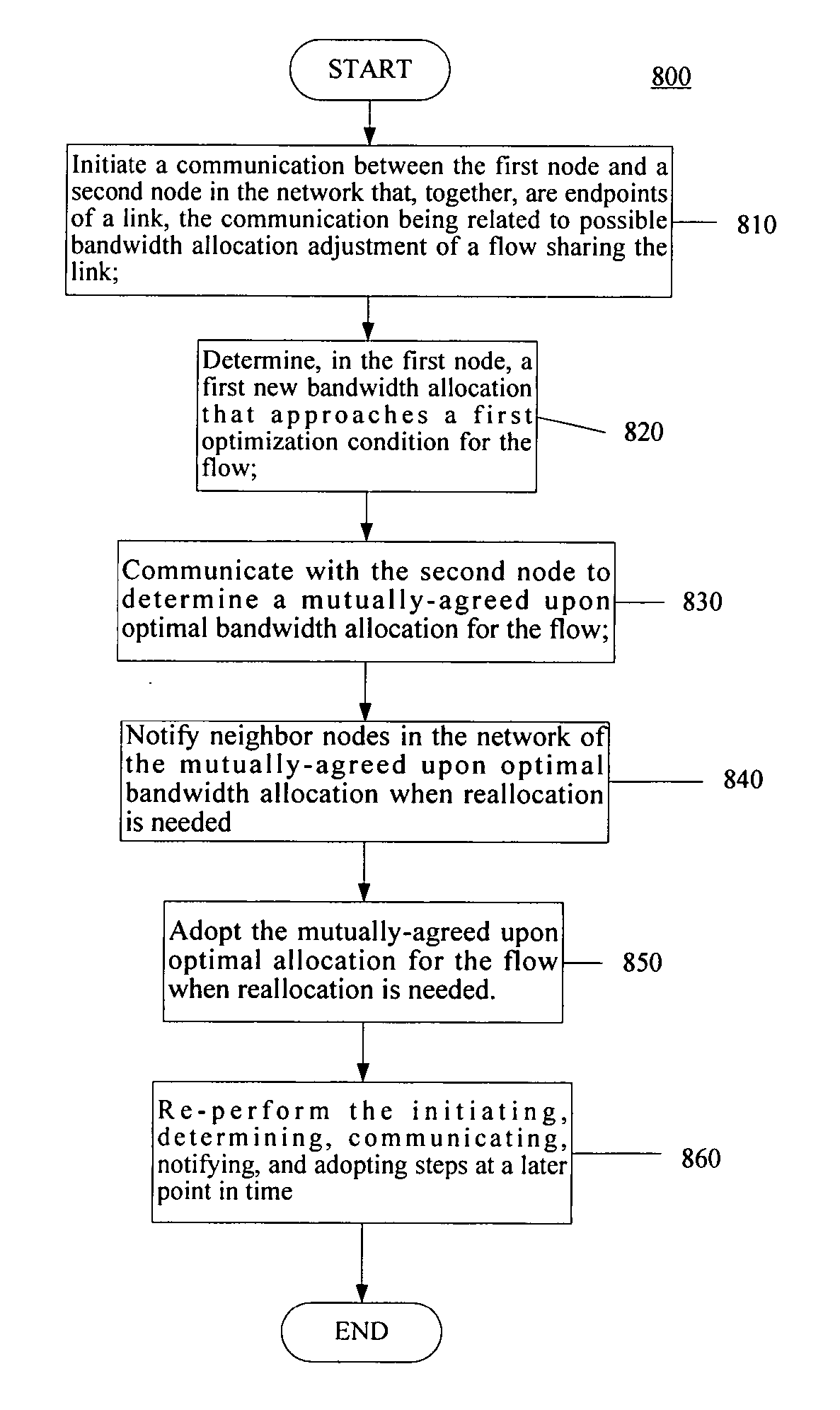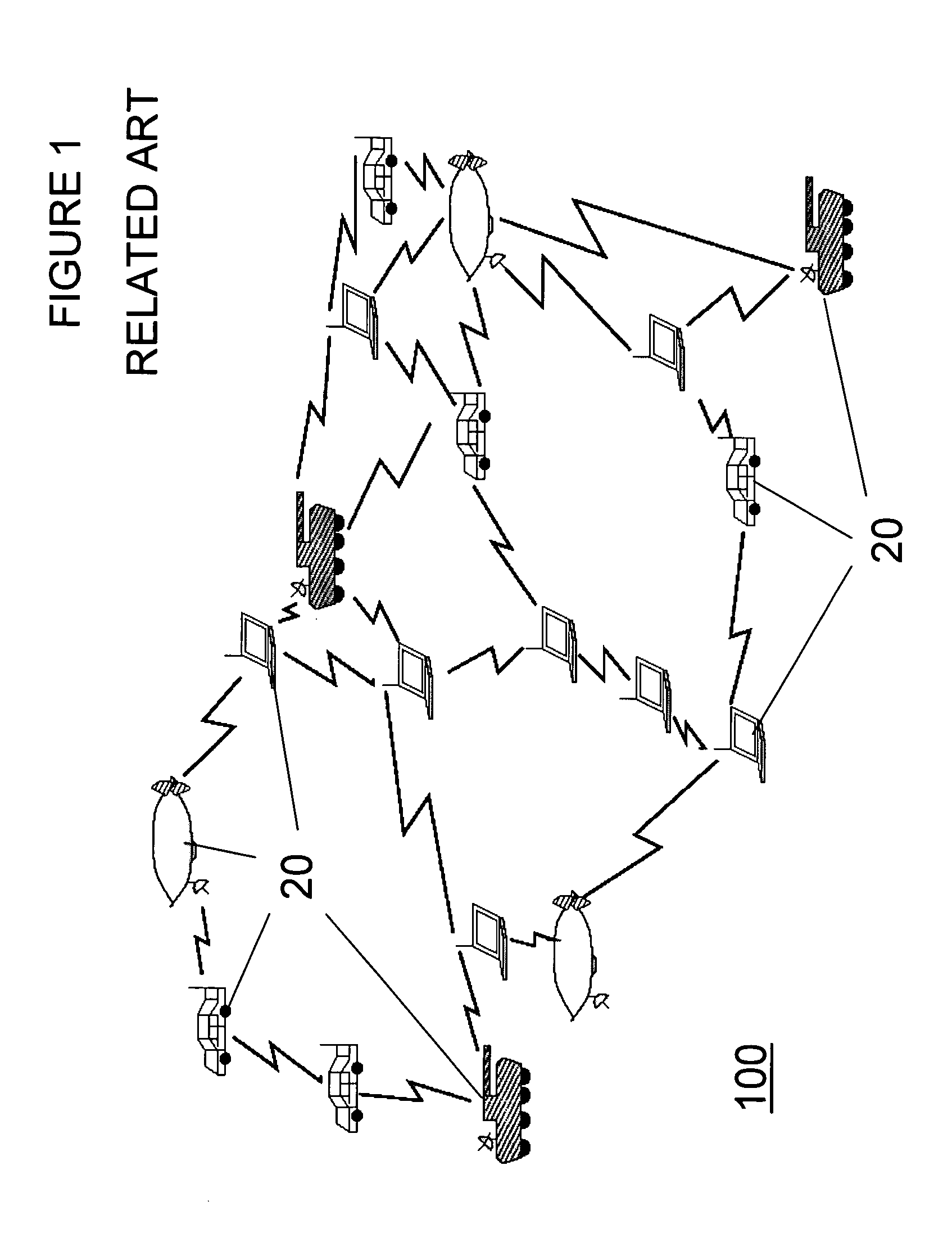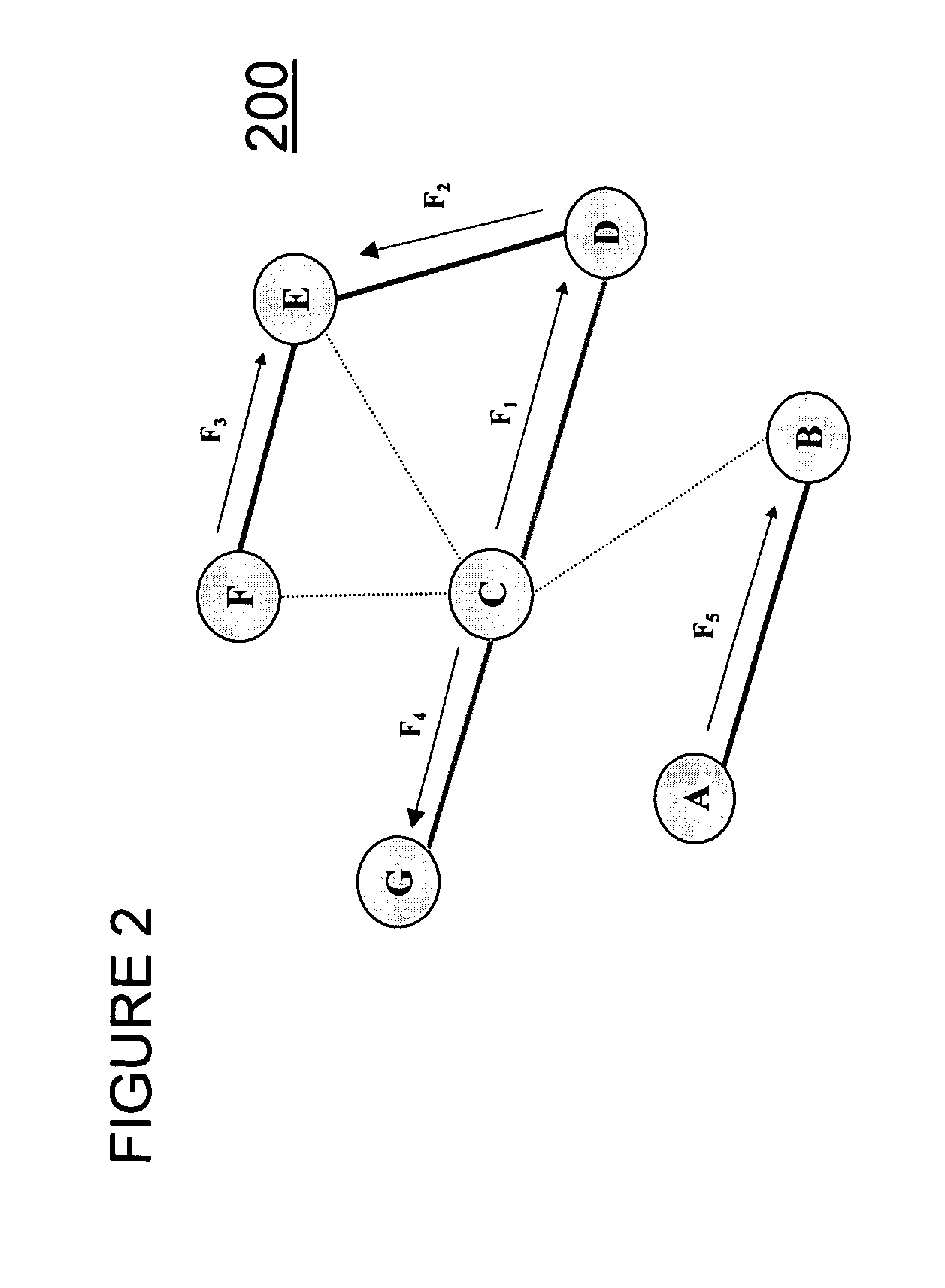Distributed bandwidth allocation and transmission coordination method for quality of service provision in wireless AD HOC networks
a wireless ad hoc network and bandwidth allocation technology, applied in data switching networks, frequency-division multiplexes, instruments, etc., can solve problems such as inability to coordinate protocols, and inability to provide random access protocols
- Summary
- Abstract
- Description
- Claims
- Application Information
AI Technical Summary
Problems solved by technology
Method used
Image
Examples
Embodiment Construction
[0139] FIG. 4 illustrates a third small network 400 according to certain embodiments of the present invention wherein the network uses a T=14 periodic conflict-free schedule. FIG. 4 also includes a table that illustrates which slot positions, if any, are idle for each node on the network
[0140] In the ad hoc network operating according to the periodic schedule of FIG. 4. Link (1, 2) may be activated for rate adjustment of flow F.sub.1. Under such conditions, the node endpoints compute the fairness deficits with respect to F.sub.1 and the fairness deficit computation of node 1, as depicted in the table 500 in FIG. 5.
[0141] The resulting fairness deficit of node 1 is 4 slots. Similarly, the fairness deficit of node 2 for F.sub.1 is 5 slots. Nodes 1 and 2 exchange their deficit values during the RT_UPD packet handshake. The minimum deficit node is node 1 and, therefore, it will be the ASSIGNOR. FIG. 6 includes a table 600 that depicts the local schedules of nodes 1 and 2 when node 1 per...
PUM
 Login to View More
Login to View More Abstract
Description
Claims
Application Information
 Login to View More
Login to View More - R&D
- Intellectual Property
- Life Sciences
- Materials
- Tech Scout
- Unparalleled Data Quality
- Higher Quality Content
- 60% Fewer Hallucinations
Browse by: Latest US Patents, China's latest patents, Technical Efficacy Thesaurus, Application Domain, Technology Topic, Popular Technical Reports.
© 2025 PatSnap. All rights reserved.Legal|Privacy policy|Modern Slavery Act Transparency Statement|Sitemap|About US| Contact US: help@patsnap.com



